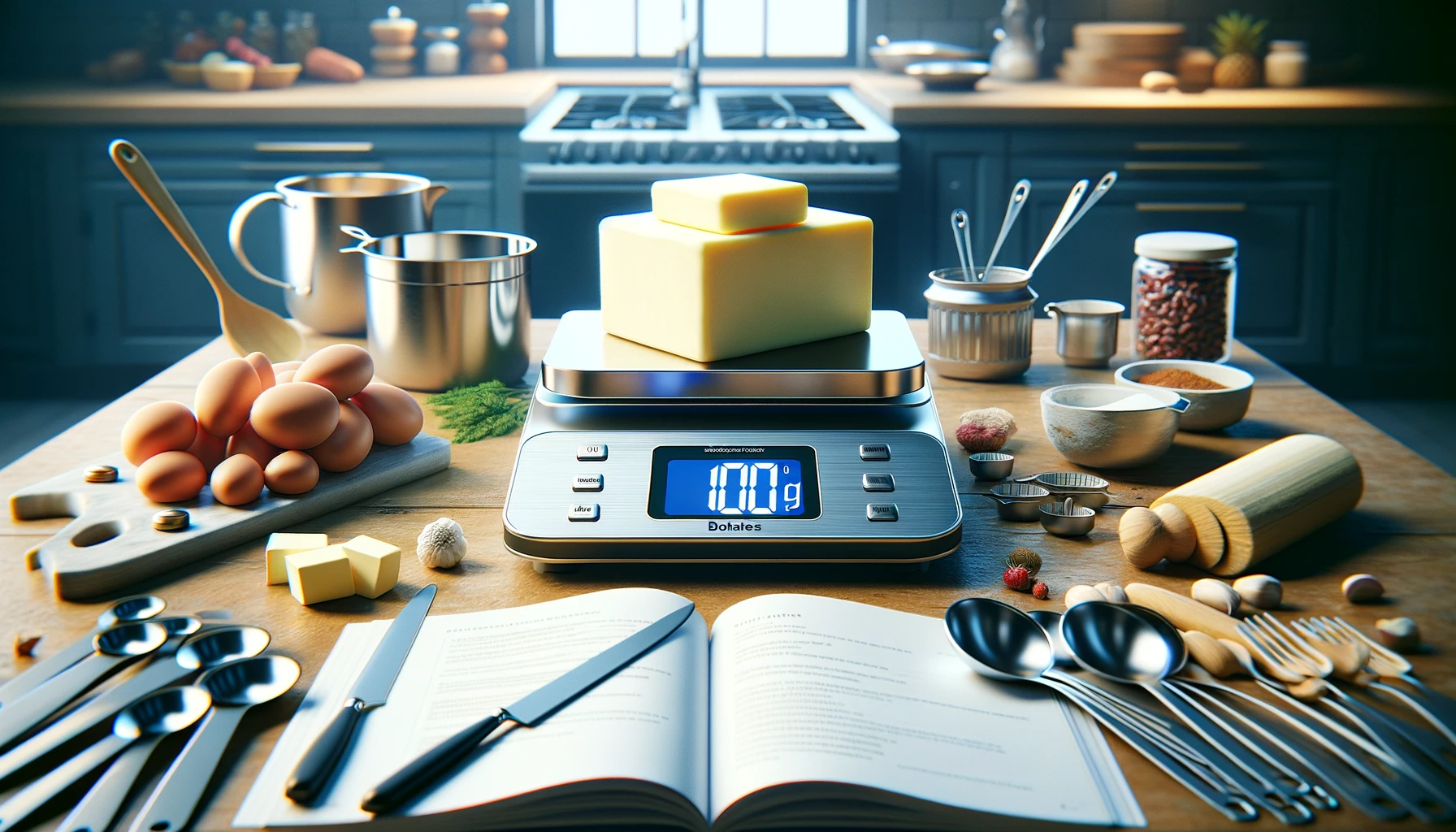
If you’ve grown up in a part of the world where the metric system isn’t the standard for measuring quantities—meaning, you’re not accustomed to weighing ingredients in grams—you might find the concept of 100 grams a bit elusive. Yet, the reality is, encounters with 100-gram (g for short) measurements are becoming increasingly frequent, especially in online recipes and various other digital platforms.
In this article, we’re dedicated to demystifying the metric system for those unfamiliar with it, specifically focusing on how to conceptualize the weight of 100 grams. Our goal is to not only familiarize you with the principle of measuring in grams but to ensure you have a solid understanding of what 100 grams represent. For a convenient reference, we’ve included an easy-to-follow table that illustrates what 100g of some of the most commonly used ingredients amounts to. To view this table, simply follow this link.
As we delve into the subject, remember that getting comfortable with grams as a unit of measurement can greatly enhance your precision in both cooking and various other applications where accurate measurements are crucial. Whether you’re baking a cake, preparing a well-balanced meal, or engaging in any activity that requires precise quantification, understanding how much is 100gms can make a significant difference in achieving the desired outcome.
100 Grams In Context
Understanding measurements can often seem daunting, especially when transitioning from volume to weight. Grams, a fundamental unit of weight in the metric system, cannot be directly equated to volume measurements like cups or tablespoons, a distinction that is important for precision in recipes and dietary planning. We’ll explore the relationship between grams and volume measurements more in-depth shortly.
However, a practical approach to grasping the weight of 100 grams is through its comparison with ounces or pounds, since all these units are used to measure weight. Specifically, 100 grams is approximately equivalent to 3 ounces (3.5274 ounces to be exact) or 1/4 of a pound (0.220462 pounds precisely). Although these conversions are not perfect, they provide a tangible sense of what 100 grams represents in a more familiar context.
To simplify further, consider everyday items such as a stick of butter or a couple of large eggs. These comparisons offer an intuitive way to visualize 100 grams: a stick of butter typically weighs about 113.4 grams, while two large eggs, shells included, closely match this weight. Although slightly more than 100 grams, these examples serve as accessible, real-world references to help approximate the weight of 100 grams.
By framing 100 grams in relation to common household items and other units of weight, the objective is to demystify this measurement, making it more relatable and understandable for those unfamiliar with or transitioning to the metric system. Whether for cooking, baking, or any activity requiring precise measurements, having a clear mental image of 100 grams can significantly enhance accuracy and confidence.
Interesting Fact
Here’s a fascinating tidbit for those curious about culinary and packaging differences across the globe. When it comes to butter, the European market offers a unique presentation compared to what many might be accustomed to. In Europe, butter is commonly packaged in 100g increments, diverging from the traditional stick form familiar to many, especially in the United States. Instead, European butter adopts a shape that’s more akin to a small brick.
This variation in packaging and shape not only reflects regional preferences and standards but also provides a practical example of how 100 grams can manifest in everyday items. The 100g butter packaging found in Europe serves as an excellent reference point for visualizing this weight, making it easier for individuals to grasp the concept of metric measurements in a tangible form. Whether you’re a culinary enthusiast exploring international recipes or simply interested in the quirks of global food packaging, this interesting fact about European butter offers a small yet insightful glimpse into the diverse world of measurement and presentation.

Grams VS Cups, Tablespoons And Teaspoons
In the world of cooking and baking, understanding measurements can be the key to success. Particularly, if you’re delving into recipes, you may often find yourself wondering about the exactness of 100 grams, a quantity frequently cited in culinary instructions. Here lies an intriguing challenge.
American culinary traditions predominantly utilize volume measurements such as cups, tablespoons, and teaspoons for their simplicity and convenience. Conversely, the global standard leans towards weight measurements for precision, with 100 grams standing out as a commonly used benchmark. Indeed, 100 grams is a measure of weight, and herein lies a critical point of consideration: converting weight to volume is not straightforward due to the varying densities of substances. A cup of feathers weighs less than a cup of sugar, illustrating how density affects the conversion from weight to volume.
To bridge this gap and foster a better understanding of how 100 grams translates into more familiar volume measurements, we’ve put together an accessible table. This resource specifically compares 100 grams of various commonly used cooking ingredients to their equivalents in US cups, tablespoons (tbsp), and teaspoons (tsp), providing rounded figures for ease of use. This table is an invaluable tool for those looking to navigate the nuances between weight and volume measurements in recipes, ensuring clarity and confidence in the kitchen. Whether you’re an avid baker or a culinary enthusiast exploring international recipes, this comparison between grams and volume measurements is designed to enhance your cooking precision and enjoyment.
How Much Is 100 Grams

Perfect Way To Measure Out 100 Grams
Discovering the optimal method to accurately measure out 100 grams of any ingredient or substance doesn’t have to be a complex endeavor. Indeed, the ideal solution lies in the simplicity and precision of utilizing a combination of tools found in many kitchens. The key to success involves having a reliable set of measuring cups alongside a food scale. This approach ensures that you can weigh your ingredients with confidence, providing the accuracy needed for perfect culinary results.
When recipes specify 100 grams, the importance of precision cannot be overstated, as even slight deviations can affect the outcome. By incorporating the practice of weighing ingredients whenever possible, you guarantee that each measurement of 100 grams is exact, aligning with the recipe’s requirements. This method not only elevates the quality of your cooking and baking but also enriches your overall culinary experience. Whether you’re a seasoned chef or a home cook, understanding and applying the perfect way to measure out 100 grams using both measuring cups and a food scale ensures your dishes turn out precisely as intended, every time.

